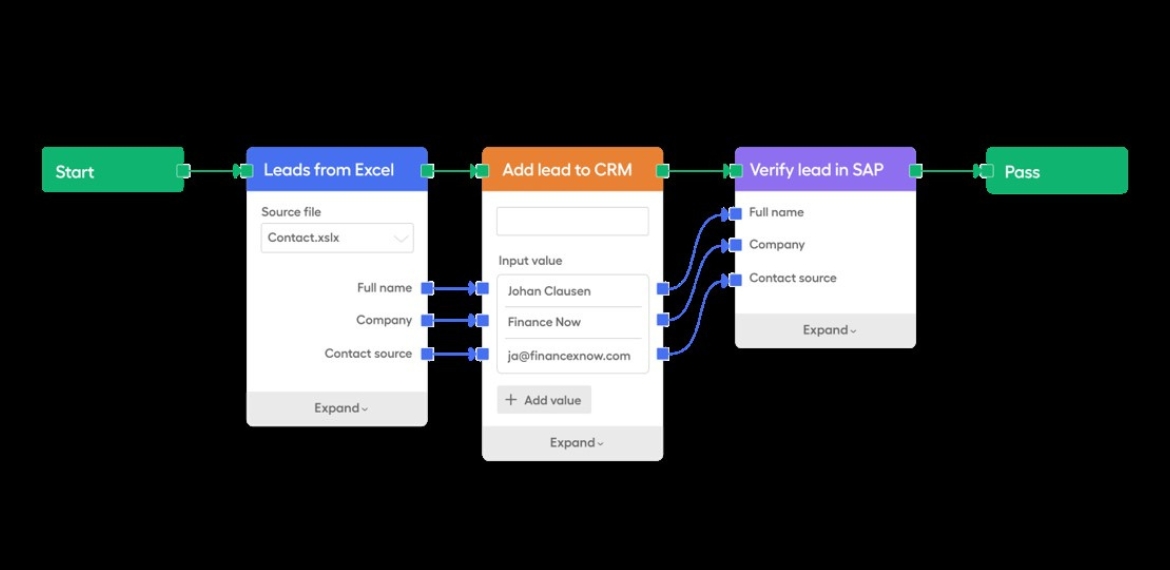
Thanks to Leapwork for providing us with this blog post.
In this short article we’re going to cover how QA teams can set themselves up for success with test automation and test management that fosters collaboration.
But first, what causes these issues within QA, and how does test automation come into the picture?
Test automation has typically been a very siloed operation. The solutions that we’ve been relying on until now are typically code-based.
And here-in lies the problems with code-based solutions:
- They are adopted by a small group of people. People who normally have a developer-type profile. This makes automated testing unusable to those who need it – product owners, test managers, ITOps, and business analysts. Collaboration is hindered.
- Developers (as we know too well) are expensive to hire and difficult to find. We need developers to spend their time where they create the most value for the business – developing features, and fixing issues that arise during testing.
- The maintenance it takes to keep these automated tests running is immense. Take Selenium as an example which requires more time to maintain than is spent testing. This simply isn’t scalable. And it creates another collaboration blocker.
- It can take anywhere between 6-12 months to learn a code-based tool. If there is only one person (we’ve discovered that this is quite often the case) building and maintaining these tests, what happens if they’re on holiday? Or sick? Or quit? If a test breaks, there’s no one to catch regressions or run tests. No one to quickly pick up the build and maintenance of said tests. You can’t meet your deadlines. And the business can’t push out releases or customizations quickly. Progress is put on pause.
What can you do to avoid these bottlenecks?
For starters, test automation doesn’t have to be code-based. In fact, test automation shouldn’t require a tester to code at all.
Testing isn’t a domain that’s specific to developers. It’s a task that’s carried out by an entire profile of people. By that logic, test automation should also be accessible to the people who are testing – business users and analysts (aka. User acceptance testers), test managers, and product owners.
And lastly, test automation shouldn’t require more maintenance than the time you spend testing.
A visual automation framework can help you overcome these challenges.
What exactly is a visual automation framework?
Well, instead of using code to describe test cases or processes, tests are built in a way that people find easy to understand – as simple as cobbling lego blocks together.
In the image below, you can see an example of what a visual automation framework looks like. A series of blocks that enable any tester to build automation in minutes, and an entire team can learn, build and maintain in a month.

Seeing this picture for the first time, it probably won’t capture your imagination right away. But this approach to automation means that you can close the skills gap between developers and testers. You’re enabling anyone with the tester profile to build and collaborate on/with(?) automation.
And, you can keep maintenance to a minimum. You don’t need to comb through lines and lines of code to ensure that a test is functional.
The outcome? Your life becomes a whole lot easier. New features, customizations and products are released much faster.
As a result, there is more room for collaboration between developers and testers during the development lifecycle for the work that you find valuable. And for the work that brings value to the organization.
If you want to learn more about why visual automation frameworks are key for collaboration, and how they can foster a future of faster releases, visit our solutions page on test automation.
Author

Anna Thorsen, Automation Expert at Leapwork
Anna Thorsen is an automation expert and writer and covers a range of topics on test automation. These topics range from tackling technical debt, getting the best return on investment from test automation, and assessing your testing maturity so you can build an efficient QA function.
Leapwork is an EXPO Gold partner at EuroSTAR 2023, join us in Antwerp